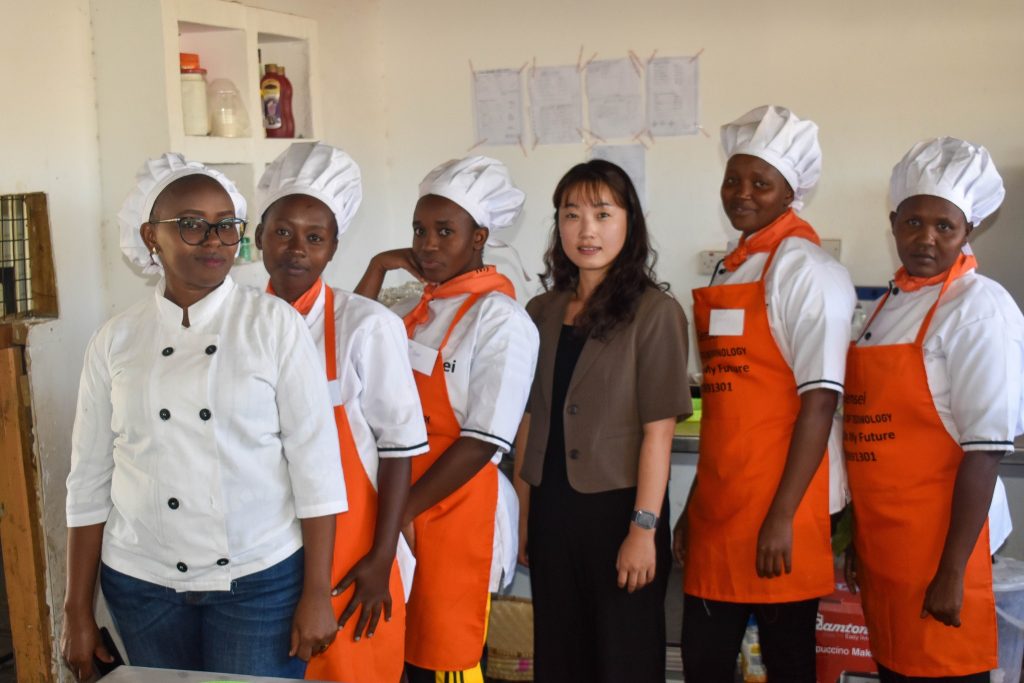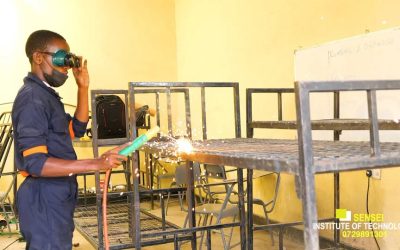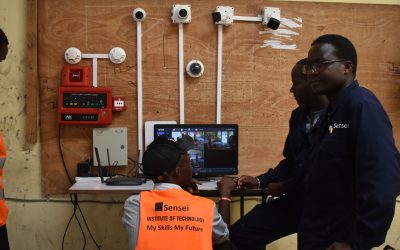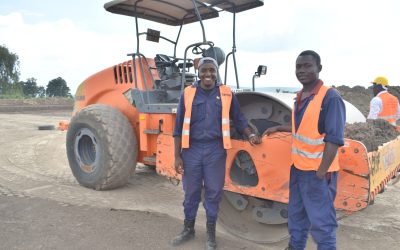Key Observations on the Implementation of Kenya’s Competency-Based Curriculum (CBC)

Background: Kenya’s Shift to a Competency-Based Curriculum
Kenya’s education system has been undergoing a major reform with the introduction of the Competency-Based Curriculum (CBC) to replace the longstanding 8-4-4 system. Under 8-4-4, students spent 8 years in primary, 4 in secondary, and 4 in university, with a heavy emphasis on content coverage and high-stakes exams. This system was widely criticized for overloaded content, rote learning, and inadequate development of practical skills.
CBC was designed as a response to these challenges – it is a learner-centered framework that prioritizes the development of competencies (skills, creativity, critical thinking, values) over memorization of textbook knowledge. The new curriculum structure (2-6-3-3) comprises 2 years of pre-primary, 6 years of primary, 3 years of junior school, and 3 years of senior school, replacing the old primary/secondary split.
Implementation of CBC began in phases starting with lower grades around 2018–2019, despite some initial hesitation. In late 2018, the Education Ministry briefly postponed the rollout citing insufficient preparation, and even the President apologized for early confusion
By 2019, however, CBC was rolled out in Grade 1 and has since advanced each year. As of 2025 the reform spans the whole basic education system – the pioneer CBC cohort has reached Junior Secondary (Grade 7-9) and is set to enter Senior Secondary in 2026. A Presidential Working Party on Education Reforms (PWPER) was appointed in 2022 to evaluate CBC’s progress and address teething problems. Based on its recommendations, the government has even rebranded CBC to “Competency-Based Education (CBE)” to emphasize a holistic educational approach beyond just curriculum changes.
This broader approach under CBE underscores that successful reform requires not only new curriculum content but also investments in infrastructure, teacher training, and supportive policies for all education levels. In short, Kenya’s shift to CBC/CBE is ambitious and far-reaching, touching every aspect of schooling from classroom practice to school structure.
Teacher Preparedness and Training
A critical observation in CBC implementation has been the level of teacher preparedness – or lack thereof – for the new curriculum. The shift to CBC demands that teachers adopt new pedagogical methods (like project-based learning and formative assessment) and integrate cross-curriculum competencies, which many were not initially trained to do. Surveys conducted in the early phase of rollout revealed that a majority of educators felt underprepared.
In 2022, for example, over 80% of secondary school heads and about 70% of primary school heads reported feeling unready to support CBC in their schools. In one review of studies on CBC, teachers themselves cited inadequate training and lack of preparation as major hurdles in effective implementation.
Many teachers received only short in-service training workshops before being asked to deliver the new curriculum, leading to uncertainty in interpreting the curriculum designs and objectives. As a result, some reverted to traditional teaching methods, undermining the competency-based approach in the classroom.
Another challenge has been the increased workload for teachers under CBC. Unlike 8-4-4, the new curriculum requires continuous assessment and detailed record-keeping of each learner’s progress. Teachers must design and mark frequent practical assignments, maintain portfolios for every student, and enter assessment data regularly. This has created a heavier administrative burden on top of teaching duties.
A 2024 study noted that teachers’ workload – with many records and reports to prepare – was impeding quality delivery of CBC lessons. Similarly, education experts pointed out that managing piles of assessment sheets and compiling scores for dozens of students can easily overwhelm teachers and eat into teaching time. This workload stress has underscored the need for better support and tools for teachers.
Efforts to improve teacher preparedness have been a key part of CBC implementation. The government and partners have rolled out nationwide in-service training programs and mentorship for educators. For instance, a tailored training program for head teachers (through the Kenya Education Management Institute and partners) was launched to help school leaders guide their teachers in CBC; initially only ~20% of school heads felt capable of mentoring staff in the new curriculum, so hundreds of head teachers have since been trained to fill that gap.
At the classroom level, the Teachers Service Commission (TSC) has revised pre-service teacher education – new teachers now graduate with a competency-based teacher training curriculum – and conducted multiple rounds of upskilling workshops for those already in service.
One of the most notable moves has been large-scale teacher recruitment to address staffing shortfalls and bring in fresh talent conversant with CBC. As the first cohorts moved to junior secondary in 2023, the government hired over 30,000 new teachers for JSS to ensure each school had subject specialists.
By early 2025, the education ministry reported a total of 76,000 teachers had been deployed to junior schools, with many existing teachers also “retooled” (re-trained) to handle new subject areas. Despite this, shortages persist – especially in subjects like science and technology that require specialized instructors.
The ongoing strategy includes continuous professional development, peer learning, and equipping teachers with resources (like digital assessment tools) to ease their workload. These measures are gradually improving teacher confidence in CBC delivery, but the initial years clearly showed that teacher preparedness is pivotal: without well-trained, supported teachers, the competency-based approach cannot effectively reach the learner.
Infrastructure and Learning Resources
Implementing CBC across Kenya’s diverse school contexts has shone a spotlight on infrastructure and resource needs. A competency-based, practical curriculum demands facilities and materials that many schools, especially in rural or marginalized areas, simply did not have. Inadequate infrastructure has been one of the most critical challenges in CBC implementation.
Under the old system, many primary schools never needed science laboratories, workshops, or extensive ICT infrastructure – but the new curriculum envisions learners doing regular experiments, projects, and digital learning. As a result, the early years of CBC saw schools struggling to meet these requirements. Education experts sounded alarm that delivering CBC content depends heavily on equipping institutions with resources such as libraries, laboratories, and ICT tools, which were lacking in many schools.
In particular, the rollout of junior secondary (Grades 7–9) in 2023 highlighted a severe shortage of science labs and technical subject facilities. These grades introduced subjects like Integrated Science and Pre-Technical Studies that require lab experiments and hands-on work, yet most primary schools hosting junior classes had no laboratories or specialized rooms, creating a practical learning gap.
The government has recognized these gaps and initiated efforts to upgrade school infrastructure to align with CBC needs. One innovative stopgap measure has been sharing facilities: in 2023–24, the Ministry of Education directed well-equipped schools (often secondary schools) to share their science laboratories with nearby junior secondary classes that lack them.
This policy was a pragmatic way to immediately give students access to labs, fostering collaboration between schools. At the same time, there are major investments underway to expand facilities. The government announced plans to construct 2,600 new laboratories starting January 2025 in preparation for the pioneer CBC cohort entering senior secondary in 2026.
This includes building 1,600 physical labs in schools that currently have none, and setting up 2,000 virtual labs leveraging technology for schools with limited space. The goal is that by the time CBC learners reach Grade 10 (senior school), “every school will have at least one lab”, whether physical or virtual. Such commitments indicate a significant scaling up of STEM infrastructure to anchor the curriculum’s practical orientation.
Beyond labs, classroom space and general facilities have also been areas of focus. The transition to CBC coincided with a policy of 100% transition from primary to secondary, meaning larger student cohorts needing accommodation.
Under the previous administration, substantial funding (about Ksh 26 billion with World Bank support) was invested to build additional classrooms and workshops to support the double cohort that would result from CBC’s introduction.
However, a policy change in late 2022/early 2023 saw junior secondary “domiciled” in existing primary schools rather than separate secondary schools, in order to utilize the available primary infrastructure and avoid overcrowding secondary schools. This move addressed the mismatch between the number of primary vs secondary schools (Kenya has many more primary schools), but it also meant primary institutions had to be upgraded to meet secondary-level standards. Many primary schools quickly repurposed rooms as laboratories or art studios, and the government rushed to supply things like lockers, science kits, and desks for the new Grade 7–9 classes.
According to officials, 92% of stakeholders supported hosting junior classes in primary schools (as it kept younger adolescents closer to home) provided resources were beefed up accordingly. School heads (through their association, Kessha) initially voiced concern that absorbing junior secondary without proper funding would strain resources and discipline.
These concerns are being addressed by channeling funds to infrastructure improvements at primary schools and developing guidelines for managing the new “comprehensive” (Pre-Primary to JSS) schools.
Learning materials and equipment are another critical resource area. CBC introduced new learning areas and a revised syllabus, which required new textbooks and teaching guides. The rollout of CBC materials experienced some delays and confusion in the initial years, but the Kenya Institute of Curriculum Development (KICD) approved a range of textbooks for each grade. A notable issue has been the cost of these materials, many of which ended up being shouldered by parents.
From textbooks to the art supplies and tools needed for CBC projects, families have faced additional expenses. Surveys indicate that parents bear about 38% of education costs in the CBC era, and 74% of parents have called for the cost of learning materials to be lowered
The government has responded by capping textbook prices and even considering free supply of some materials, but in practice many schools still ask parents to purchase items for projects. In 2023, KICD also moved to trim down the curriculum content and number of subjects per grade to reduce the overload and resource burden. Acting on the recommendations of the education reforms taskforce, KICD announced a reduction and integration of some learning areas to address “content overload” in CBC.
This rationalization is expected to not only ease timetabling and content volume for students, but also reduce the sheer number of books and equipment that schools and learners need to handle.
In summary, the CBC implementation has exposed significant infrastructure and resource needs, but it has also catalyzed action to improve Kenya’s schools. Classrooms are being upgraded, labs constructed, and digital resources introduced (e.g. virtual labs, online content on Kenya Education Cloud) in an effort to create learning environments conducive to the competency-based approach.
These improvements are ongoing. Ensuring every school – whether urban or rural – has the minimum facilities for practical learning remains a work in progress, and it will be a deciding factor in the ultimate success of CBC.
New Assessment Methods and Continuous Evaluation
One of the most transformative aspects of CBC in Kenya is the overhaul of assessment methods. The traditional 8-4-4 system was infamous for its one-off, high-stakes examinations: the Kenya Certificate of Primary Education (KCPE) in Standard 8 and the Kenya Certificate of Secondary Education (KCSE) in Form 4 determined a student’s path and opportunities. CBC has deliberately moved away from that “exam-passing culture” towards a model of continuous assessment and competency evaluation.
Under CBC, learning is measured through a series of formative assessments woven into daily classroom activities, rather than a single summative exam at the end of the cycle. Teachers carry out regular evaluations – quizzes, observations, projects, portfolios, practical tasks – to gauge each learner’s progress on various competencies.
These school-based assessments (SBAs) are low-stakes and ongoing, meant to identify strengths and weaknesses in real time and inform teaching adjustments. The philosophy is that assessment should enhance learning, not just audit it; mistakes are treated as learning opportunities in this continuous feedback loop.
Impact on Students’ Learning Experience
The ultimate test of CBC’s success is its impact on students – in terms of both their learning outcomes and their day-to-day experience in the classroom. Early observations suggest a mix of positive developments and areas of concern. On the positive side, learning has become much more interactive and learner-centered under CBC.
Classrooms are buzzing with activities: students are frequently seen working in groups, engaging in debates, doing experiments, creating crafts and models, and going outside for practical lessons. This is a marked change from the lecture-driven, note-taking culture of the past. Teachers now act more as facilitators, guiding learners through hands-on tasks that build understanding.
For instance, a Grade 5 Environmental Activities lesson might involve learners planting seedlings in a garden to learn about plant growth, or a Grade 7 science class might have students constructing a simple circuit to grasp electricity concepts. Such experiences are intended to foster critical thinking, creativity, communication, and collaboration skills – the so-called 21st-century skills that CBC prioritizes.
Many students have responded well to the practical approach. Educators report that learners are showing greater enthusiasm and curiosity when they can relate lessons to real-life scenarios. Learners are empowered to explore their talents in areas like music, art, sports, and technology from an early age, because CBC includes those as formal learning areas rather than treating them as extras.
There are anecdotes of children who were previously considered “average” under exam-based grading now excelling in creative projects or technical skills, thus finding new confidence.
According to one nationwide survey, a segment of parents (about 20%) rated CBC highly, praising its multiple practical activities and how it engages learners. Roughly 8% of parents even noted that their children genuinely enjoy the CBC style of learning, finding school more fun and engaging than it was under 8-4-4. These are encouraging signs that, at least for some learners, CBC is making education more meaningful and enjoyable.
However, the transition has not been uniformly smooth for all students. One major concern observed was curriculum overload – the very issue CBC was meant to solve, ironically became a problem during its implementation. Especially in upper primary and junior secondary, students suddenly had a large number of subjects and learning areas to cover, sometimes as many as 12-14 distinct subjects in a term.
This spread thin the available teaching time and risked overwhelming learners with content and assignments. A parent of a junior secondary student lamented that “CBC is too packed” with content and that frequent policy shifts (like changes in compulsory subjects) added to the confusion.
The Presidential Working Party acknowledged that there were overlaps and redundancies in the curriculum design that needed ironing out. In late 2023, as mentioned earlier, the curriculum developers moved to integrate and reduce certain subjects to lighten the load. This rationalization is expected to streamline students’ timetables so they can focus more deeply on core competencies without rushing through an excessive syllabus.
Another critical observation on student impact comes from early learning outcomes data under CBC. In 2023, an independent assessment (the first of its kind to evaluate CBC learners in foundational skills) revealed mixed results.
According to the Foundational Literacy and Numeracy Assessment (FLANA) report 2023, there have been “mixed fortunes in learning outcomes” for early grade learners: notable gains in numeracy skills (including improved mathematics performance, especially among girls), but worrisome declines in literacy (reading) outcomes, particularly for boys.
In simple terms, while CBC’s emphasis on practical math and problem-solving might be yielding better numeracy, it appears reading proficiency has not seen the same improvement and may have stagnated or dropped for some groups.
This is a concerning finding because it suggests that basic reading skills need more attention even as we focus on new competencies. Education experts interpret this as a reminder that foundational skills are still paramount – the curriculum must balance new content (like digital literacy or creative arts) with a strong foundation in the 3Rs (reading, writing, arithmetic).
The government has noted this and started programs specifically targeting literacy and numeracy in early grades alongside CBC (for example, the Tusome initiative for reading was strengthened).
Additionally, CBC’s continuous assessment regime has had an effect on student motivation and pressure. Since students know that every piece of work could contribute to their final record, some have become more conscientious and consistently engaged. It rewards steady effort – a student who works diligently on projects and tests over the years stands to benefit, as opposed to the old system where one could cram for the exam at the end.
However, there is also the risk of assessment fatigue: some learners (and parents) feel that students are “always being assessed” in CBC, from one task to the next, which can be stressful in its own way if not managed carefully. Schools are learning to schedule assessments sensibly to avoid overloading students on any given week.
The abolition of class rank and intense exam competition in primary has reduced unhealthy academic pressure on very young children, which is a positive mental health aspect. Still, when the Grade 9 and Grade 12 exams eventually come, they will be high-stakes for transitions, so the exam stress hasn’t been completely eliminated – just deferred to later stages, albeit with a cushioning continuous assessment component.
In terms of skills and attitudes, teachers have observed improvements in students’ confidence, presentation skills, and group collaboration. Through CBC’s emphasis on values and community service, many learners are also getting opportunities to develop leadership and citizenship qualities (for example, through school clubs, community projects, and the requirement for learners to participate in community service activities in junior secondary).
These are long-term benefits that may not show up in test scores but are important for holistic education. The impact on students thus far is a mix: CBC is succeeding in broadening the learning experience and uncovering talents, but it must guard against spreading students too thin and ensure that basic competencies like literacy are solidly achieved. Ongoing adjustments to the curriculum and teaching will be crucial to maximize the positive impact on learners as the system matures.
Parental Involvement and the Community’s Role
CBC’s implementation has notably expanded the role of parents and the community in a child’s education, which is a significant cultural shift in Kenya. Under the old system, a parent’s primary duty was to pay fees, ensure the child went to school, and maybe help with homework occasionally, while formal learning was seen as the teacher’s domain.
CBC, by design, envisions education as a more collaborative effort – parents are considered key stakeholders and partners in the learning process. The curriculum includes activities that specifically require parental input or home support. For example, young learners might get assignments like “find out from your parent how traditional food is prepared and write a report” or “with the help of a guardian, plant a tree and record its growth”. These tasks are meant to root learning in real-life context and tap into indigenous knowledge, with parents facilitating when needed.
This heightened parental involvement has yielded both positive engagement and pushback. On one hand, many parents appreciate the opportunity to be closely involved in their children’s learning. In a survey, 18% of parents said they genuinely enjoy being part of their child’s learning activities under CBC.
They reported that it allows them to understand what their children are learning and to bond through educational activities. Some parents have been amazed by the practical skills their kids are picking up – like a primary schooler who can now bake simple recipes or a junior secondary student who can assemble a basic science project at home – and they feel proud to be part of that journey. Schools have also started organizing open days and portfolio days where learners showcase their CBC projects, often with parents in attendance, which has strengthened the home-school connection.
On the other hand, a significant number of parents have raised concerns that CBC demands too much of their time, effort, and resources. A common complaint is that children, especially in lower primary, are coming home with elaborate projects or homework that they cannot do alone, effectively forcing busy parents to step in nightly. Over 10% of parents in one report felt the curriculum had “excessive involvement of children in activities” (and by extension, excessive demands on parents).
There have been media reports of parents staying up late to help build toy robots, models of the solar system, or prepare costumes for thematic presentations. While such projects are educational, not all parents have the time or skills to assist, leading to frustration. Moreover, 7% of parents in the same survey thought the curriculum content was too much and urged a review to trim it down – when parents find the content overload, it’s likely because they are heavily involved in helping their kids manage it.
Ongoing Challenges and Policy Responses
As Kenya’s competency-based curriculum enters its mid-implementation phase, it’s clear that the journey is a work in progress. The observations from the field – both positive outcomes and persistent challenges – have informed several policy responses and adjustments to keep the reform on track. Key ongoing challenges include ensuring consistent quality across all schools, maintaining clarity in policy (to avoid confusion from frequent changes), and securing the resources needed for full implementation.
One notable challenge has been the frequent policy shifts and communication gaps during implementation, which sometimes left teachers and parents confused. For example, in the span of a year there were mixed messages about whether certain subjects (like mathematics in senior secondary) would be optional or compulsory, leading one parent to comment that “the government is as confused as the parents” regarding CBC changes.
In response, education stakeholders have called for greater consultation and clear communication before rolling out changes. The Ministry has since pledged to involve teacher unions, school heads, and parent associations more actively when making tweaks to the curriculum or policies. The formation of the Presidential Working Party itself was an effort to gather wide input. Going forward, the success of CBC/CBE will depend on maintaining stakeholder trust through transparency and inclusive decision-making.
Addressing resource inequalities remains a priority in policy responses. The government’s commitment to laboratory construction, classroom expansion, and hiring additional teachers (as discussed earlier) are part of this response. By early 2024, the Ministry aimed to have over 90,000 teachers in junior secondary to handle the influx of students and breadth of subjects. As per officials, about 76,000 teachers had already been deployed to junior schools by 2025, and thousands more existing teachers were being trained to fill subject-specific gaps.
These numbers show the scale of investment in human resources, although deployment is not uniform – remote and arid areas still report shortages of qualified teachers, which the TSC is trying to alleviate with incentives and intern teachers. Similarly, for infrastructure, the policy of leveraging technology with virtual labs and e-learning content is an innovative response to bridge gaps where physical facilities lag behind.
The education ministry is also working with the Treasury to ensure sustained funding; the CBC reform has sizable budgetary needs, and there have been calls to ring-fence funds for teacher training, materials, and school improvements in each fiscal cycle.
Importantly, the curriculum content itself has undergone review to tackle the challenges observed. The Presidential Working Party’s report in late 2022 made several recommendations to refine CBC.
These included simplifying curriculum designs, merging overlapping content, and reducing the number of learning areas per grade to ease curriculum overload. KICD acted on these proposals: by December 2023, it announced subject rationalization at various levels of basic education.
For instance, some subjects in junior secondary that were very similar have been integrated, and the time allocation for others adjusted. The intended outcome is that students get a deeper mastery of essential competencies without an excessive breadth of superficial topics. This content rationalization is a direct response to on-the-ground feedback that CBC had tried to do too much too soon.
Early 2024 also saw the refinement of assessment frameworks – KNEC released more detailed guidelines on how the 20% SBA and 20% KPSEA contributions to the Grade 9 score would be standardized, to ensure fairness and consistency. Clarifying these frameworks helps teachers and students know what to expect, thereby reducing uncertainty.
Another area of reform has been the rebranding from CBC to CBE (Competency-Based Education). While this might sound like mere semantics, it carries a philosophical message: the focus is not just on the curriculum documents but on the entire education ecosystem being competency-based. CBE emphasizes the integration of training, infrastructure, curriculum, and assessment towards the common goal of nurturing a child’s talents and skills in a holistic manner.
The Ministry has emphasized creativity and innovation across all levels and even into higher education as part of this continuum. An example of a policy change under this banner was making certain core subjects compulsory again in senior school to ensure students don’t drop essential skills – mathematics was reinstated as mandatory after debates. This shows a willingness to adjust course so that the competency goals are met without compromising fundamental learning.
Lastly, the issue of costs and equity is being addressed through policy. Education officials have openly acknowledged parental concerns about the cost burden. In 2024, the government introduced a cap on the price of textbooks and hinted at providing a basic supply of materials for each child (though implementation of the latter is still evolving).
There is also an equity consideration: private schools and well-funded public schools have jumped ahead in CBC implementation (with robotics clubs, modern labs, etc.), whereas schools in poorer regions lag behind. To prevent CBC from widening the inequity gap, policies like affirmative distribution of facilities (e.g., the first tranche of new labs is prioritizing sub-counties that have none) are in place.
Additionally, the 100% transition policy ensures that every child gets to progress through the system, but now the focus is shifting to supporting those students from disadvantaged backgrounds so that they can truly benefit from the CBC once they are in school. Programs through NGOs and government (like school feeding in arid areas, scholarships for needy students, etc.) complement the CBC implementation by tackling the socio-economic barriers to competency development.
In conclusion, the CBC implementation in Kenya, while challenging, is dynamic and responsive. The key observations – insufficient teacher preparedness, infrastructure shortfalls, assessment burdens, student performance variations, parental concerns – have all led to concrete actions and adjustments. There is a learning curve to this reform itself.
As one principal noted, it is crucial that the government and stakeholders learn from each phase and “lead by example” in adapting to the needs of CBC. The ongoing reforms aim to ensure the initial vision of CBC is realized: producing a new generation of learners who are not only knowledgeable, but also skilled, innovative, and adaptable.
The next few years will be critical as the pioneer cohort moves into higher levels and as the last remnants of 8-4-4 (the old Form 4 class of 2023) give way to the fully CBC-aligned cohorts. If the current momentum of addressing challenges is maintained, Kenya’s education system stands to significantly transform – moving away from rote-centric learning towards a more equitable, skill-oriented, and engaging paradigm that prepares students for the demands of the 21st century.
The CBC journey is still unfolding, but the lessons learned so far underscore the importance of flexibility, stakeholder engagement, and sustained support in educational change. With all hands on deck – teachers, parents, policymakers, and students themselves – the hope is that the Competency-Based Curriculum will ultimately achieve its promise of nurturing every learner’s potential and competence for the future.






